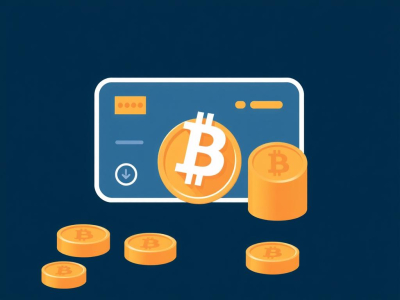
Implement robust measures to mitigate risks associated with cryptocurrency payments. Employ multi-signature wallets, which require multiple private keys to authorize transactions, enhancing security against unauthorized access. Regularly update software and systems to patch vulnerabilities, ensuring that your infrastructure remains resilient against potential attacks.
Establish compliance protocols tailored to your jurisdiction's regulations regarding cryptocurrency transactions. This includes Know Your Customer (KYC) and Anti-Money Laundering (AML) practices that help validate the identities of your clients and reduce fraud risks. Integrating these compliance measures not only protects your business but also builds trust with customers.
Monitor transactions in real-time for suspicious activity, leveraging analytics tools that can flag unusual patterns or anomalies. This proactive approach allows you to respond swiftly to potential threats, minimizing the impact of any fraudulent activities on your operations.
Lastly, educate your team about the unique challenges of accepting cryptocurrency payments. Training sessions focused on identifying security threats and understanding best practices can empower employees to safeguard sensitive information and enhance overall transaction security.
Choosing a Secure Wallet
Opt for hardware wallets for optimal protection against risks associated with cryptocurrency payments. These devices store private keys offline, reducing exposure to online threats and fraud. Ensure you purchase wallets from reputable manufacturers to avoid counterfeit products.
Consider multi-signature wallets, which require multiple keys to authorize a transaction. This adds an extra layer of security, making unauthorized access significantly more difficult. Evaluate wallet features carefully; some offer built-in compliance measures that adhere to regulatory standards, enhancing security during payment acceptance.
Regularly update wallet software and firmware to safeguard against vulnerabilities. Set strong passwords and enable two-factor authentication where available. Conduct regular audits of transactions and wallet access logs to monitor suspicious activities promptly.
Backup your wallet data securely in multiple locations. Utilize encrypted storage solutions to protect sensitive information from theft or loss. Establish clear procedures for recovery in case of device failure or compromise.
Stay informed about emerging security practices within the cryptocurrency space. Engage with communities focused on digital currency security to exchange insights and strategies that enhance protection against evolving threats.
Implementing Two-Factor Authentication
Require two-factor authentication (2FA) for all cryptocurrency payment transactions. This measure significantly enhances security by adding an extra layer of protection beyond just a password.
Utilize time-based one-time passwords (TOTP) or SMS-based verification codes. TOTP apps, such as Google Authenticator or Authy, generate unique codes that are valid for a short period, minimizing the risk of interception and fraud.
Incorporate 2FA during user registration and sensitive actions, such as withdrawals or changing account settings. Ensure users are educated on how to set up and use 2FA effectively to reduce risks associated with social engineering attacks.
Regularly review and update your 2FA implementation. Monitor transaction logs for any suspicious activity and ensure compliance with industry standards regarding security protocols.
Encourage customers to opt into 2FA when making payments. This not only protects their assets but also builds trust in your platform's commitment to secure transactions.
Consider offering backup methods for 2FA recovery, such as security questions or backup codes. This will help users regain access without compromising security if they lose access to their primary 2FA method.
Regular Software Updates
Implement regular software updates as a fundamental strategy to mitigate risks associated with cryptocurrency payments. Outdated software can expose vulnerabilities that fraudsters exploit, compromising transaction security and wallet integrity.
Establish a schedule for checking updates for all software involved in payment processing, including wallets, platforms, and any integrated applications. Enable automatic updates whenever possible to ensure timely application of security patches.
Monitor release notes from developers to understand the nature of each update. Prioritize updates that address known vulnerabilities or enhance compliance with industry standards. Failure to stay current can lead to significant security gaps.
Conduct thorough testing in a controlled environment before deploying updates in production systems. This minimizes disruption while ensuring compatibility and maintaining the smooth operation of payment processes.
Create an internal protocol for handling emergency updates in response to discovered vulnerabilities. Rapid response measures will safeguard against potential breaches during critical periods, reinforcing overall system security.
Document all update processes and changes made. This provides an audit trail for compliance purposes and assists in troubleshooting if issues arise post-update.
Monitoring Transaction Activity
Implement a robust monitoring system to oversee cryptocurrency transactions. This not only aids in detecting fraud but also ensures compliance with regulations.
- Real-time Monitoring: Utilize tools that provide real-time transaction analysis. This allows for immediate identification of suspicious activities.
- Anomaly Detection: Establish baseline behavior for typical transactions and flag any deviations. For example, large transfers outside normal patterns should trigger alerts.
- Transaction Limits: Set limits on transaction amounts to reduce the risk of significant losses from fraudulent activities.
- Audit Trails: Maintain detailed records of all transactions, including timestamps, amounts, and involved parties. This facilitates investigations when necessary.
Incorporate automated systems to streamline the monitoring process and minimize human error. Regularly review and adjust these measures based on emerging risks within the cryptocurrency landscape.
Compliance with local regulations is paramount. Ensure that your monitoring practices align with legal standards to avoid penalties and protect your business integrity.
By actively monitoring transaction activity, businesses can enhance their protection against fraud while fostering trust in cryptocurrency payment acceptance.


You can be the first!